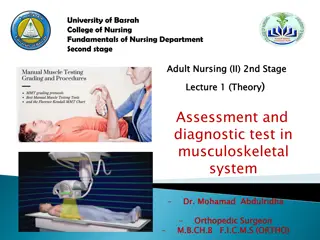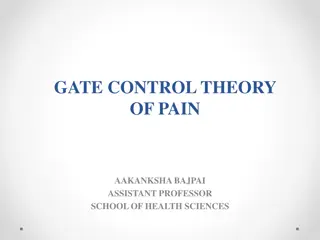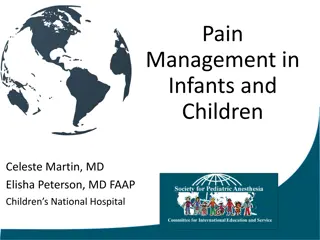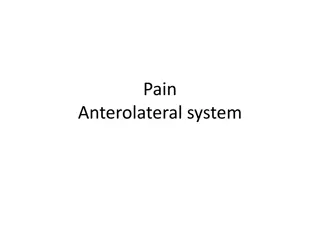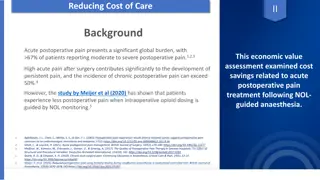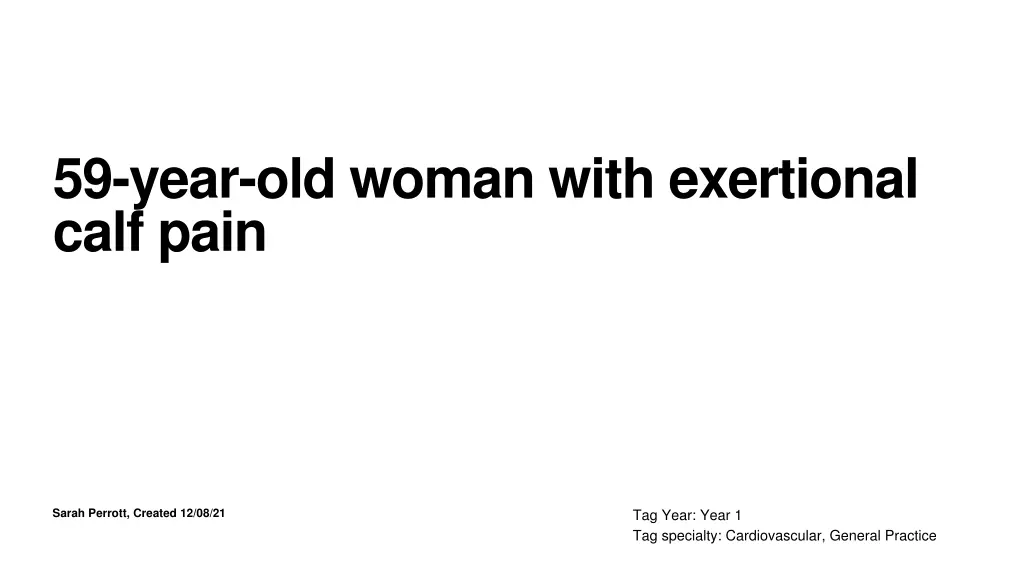
59-Year-Old Woman with Exertional Calf Pain – Diagnosis and Management
A 59-year-old woman with left calf pain on exertion, possibly indicating chronic limb ischemia, seeks medical advice. Learn about the symptoms, signs, risk factors, and management of chronic limb ischemia, as well as the differences between acute, chronic, and critical limb ischemia. Discover essential information for GPs in diagnosing and treating peripheral vascular diseases.
Download Presentation

Please find below an Image/Link to download the presentation.
The content on the website is provided AS IS for your information and personal use only. It may not be sold, licensed, or shared on other websites without obtaining consent from the author. If you encounter any issues during the download, it is possible that the publisher has removed the file from their server.
You are allowed to download the files provided on this website for personal or commercial use, subject to the condition that they are used lawfully. All files are the property of their respective owners.
The content on the website is provided AS IS for your information and personal use only. It may not be sold, licensed, or shared on other websites without obtaining consent from the author.
E N D
Presentation Transcript
59-year-old woman with exertional calf pain Sarah Perrott, Created 12/08/21 Tag Year: Year 1 Tag specialty: Cardiovascular, General Practice
Introduction You are a GP. A 59-year-old woman complains of left calf pain on walking up a hill. Her symptoms started 1 year ago. She has a history of type 2 diabetes. You think she may have chronic limb ischaemia.
Question 1 What specific symptoms would you ask about when taking a history?
Question 2 Name 3 signs of chronic limb ischaemia.
Question 3 What are the risk factors for peripheral vascular disease?
The pain was mild at first and didnt bother her. However, it gradually worsened and she is beginning to get it with minimal exertion walking on flat ground. The pain is relieved by rest, and she tends to get pain from climbing the staircase in her home one storey. She doesn t get any pain at rest, but often gets numb feet whilst in bed which is relieved by putting her legs over the edge of the bed. Her feet also get very cold, she needs to wear bed socks. She last had her diabetic foot screening 10 months prior. She has never had an ulcer or any problems before.
Question 4 How is chronic limb ischaemia managed?
Question 5 What is the difference between acute, chronic and critical limb ischaemia?
Useful resources Peripheral arterial disease: diagnosis and management NICE guidelines https://www.nice.org.uk/guidance/cg147


